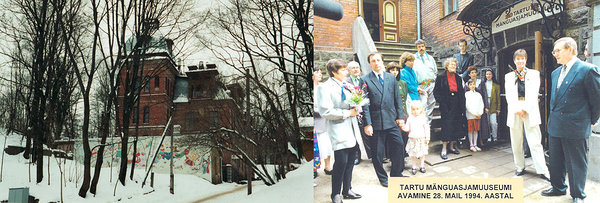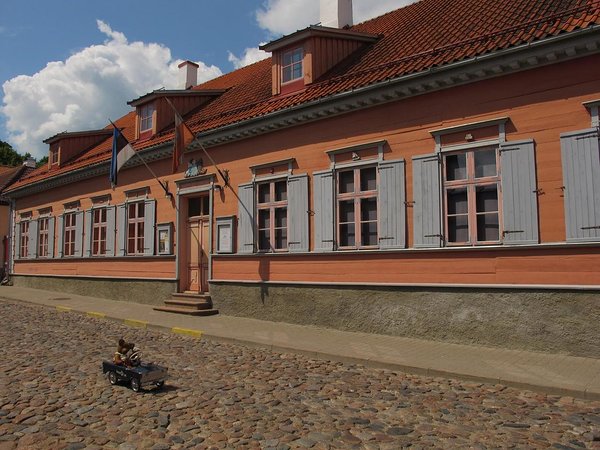History of Tartu Toy Museum
The Tartu Toy Museum was opened on May 28, 1994, as a division of the department of culture of Tartu City Government. The museum was situated on the slope of Toome Hill in the basement rooms of a private house and a small backyard house at 1 Lai Street.

By the end of 2003, Tartu Toy Museum moved into an old wooden house in Lutsu Street, which was specially renovated for the museum. On March 13, 2004, a new standing exhibition was opened for visitors together with a game and workshop room.
On December 2, 2005, the house of theatre and animation puppets was opened in the former coach house in the yard of the museum. The characters and props of animation films made in Estonia during the last 50 years and sketches of cartoons that were previously exhibited in Toy Museum’s Film Puppets Gallery (Ülikooli St. 1) are now seen in this courtyard house. Until 2010 there was also an exposition of theatre puppets from Estonia and elsewhere in the courtyard house.
On May 30, 2010, Tartu Toy Museum’s Theatre House (Lutsu St. 2) was opened as an addition to the whole complex. In Theatre House there is a theatre stage, Children’s Studio, and theatre puppets museum. Theatre House is a unique theatre which gets its inspiration from the Toy Museum, childhood, games and memories.
The history of Lutsu Street 8 and the courtyard house
The Toy Museum’s house on Lutsu Street 8 is one of the oldest surviving wood buildings in Tartu. It was built at the beginning of 1770s and presents elements from both late baroque and classicism. The house was first used by a Russian church and later as the school of Tartu garrison. In the second quarter of the 19th century the building passed on to private owners and remained a private house until the end of the 20th century. In 1998 the town bought the house to be the new location of the Toy Museum. It was renovated in 2002–2003 to look like it did back in the 18th century.
A stone house in the courtyard of Lutsu Street 8 was used as a carriage house in the 18th and 19th century. Later the building stood in ruins until it was renovated in 2005 with the financing of the European Union.

The history of Lutsu Street 2
Theatre
House is a building with an interesting history. The oldest remains of a wood building in Lutsu
St. 2 date back to the beginning of the 14th century. During the same time the
wood houses were demolished and two new, stone-and-brick houses were built.
From one of the stone houses a wholly preserved hypocaust stove and staircase
were found. During the second half of the 17th century, court
chairman-president Lars von Fleming lived here, and on later plans the building
is marked as “The President’s House”. Both buildings were severely damaged
during the Great Northern War at the beginning of 18th century and the
house that still stands today was built during 1755-1758. In the 19th
and 20th century the building had several different owners. During
the Soviet time the interior of the house was reconstructed and it was used by
sports organizations, city institutions and a theatre. Although this type of
house was quite common among the wealthier middle-class during the 18th
century in the Baltic countries and Russia, the building on Lutsu Street has a
remarkable baroque portal and door making it unique example of 17th
century architecture in Estonia.
One of the oldest wood buildings in Tartu, Lutsu
St. 2 was renovated with the funding of European Union in 2008–2010.
